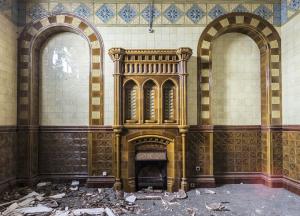 The Victorian Society is seeking nominations for its 2021 Top Ten Endangered Buildings Campaign. The annual event highlights buildings that are in dire need of repairs or are at risk of being lost completely.
The Victorian Society is seeking nominations for its 2021 Top Ten Endangered Buildings Campaign. The annual event highlights buildings that are in dire need of repairs or are at risk of being lost completely.
image: Victorian Society website
…Buildings included in previous years’ lists have already seen new funding…
The Victorian Society writes:
How to nominate
Join the campaign to save our heritage nominate a building or structure that deserves some much-needed public attention by emailing topten@victoriansociety.org.uk with details of when the building was built, its location, why the building should be included in our campaign.
Nominated buildings or structures must be in England and Wales and built between 1837 and 1914, Listed buildings are more likely to make the Top Ten, and the closing date for nominations is Friday 15th October at midnight.
Why nominate?
With the UK hosting COP26 in November this year, The Top Ten Campaign also raises awareness on how heritage conservation can play a significant role in combatting the causes of climate change.
Restoration and reuse of our historic buildings reduces waste, and carbon emissions. A third of the UK’s waste output comes from construction and demolition. Restoring and updating historic buildings reduces operational carbon emissions (carbon emissions created from the day-to-day use of the property such heating, lighting, maintenance) by up to 84 per cent.
Griff Rhys Jones, President of the Victorian Society said: “After 18 months of a Covid crisis which has seen shops and offices close, the Top Ten Campaign is more important than ever to bring heritage and conservation back into public discussion and continue the fight to find new uses to save our endangered historic buildings.”
“Ninety nine per cent of people who live in England and Wales live less than a mile away from a listed heritage site. Preserving our heritage not only improves the places where we live, it also helps to combat the wider climate emergency. Compared to refurbishing a traditional Victorian terrace property, a new building of the same size produces up to 13 times more embodied carbon.”
As opposed to operational carbon, embodied carbon is the CO2 associated with the entire construction process, including transport, production of building materials, and energy use.

